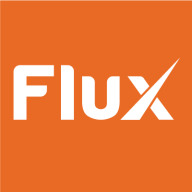

Flux and JAMS are competing in the workflow automation platform market. JAMS seems to have the upper hand due to its robust features, although Flux's pricing and support options provide advantages in certain scenarios.
Features: Flux offers straightforward automation capabilities, flexibility in handling diverse tasks, and simplicity in use. JAMS is recognized for advanced scheduling options, powerful integration capabilities, and suitability for complex enterprise needs.
Ease of Deployment and Customer Service: JAMS supports rapid scaling with a comprehensive deployment model and responsive customer service. Flux provides a simpler deployment process and efficient support, but is less scalable compared to JAMS.
Pricing and ROI: Flux presents a more affordable setup cost with quick ROI potential. JAMS, although initially more expensive, offers sufficient functionality that justifies the cost for those needing advanced features.
| Product | Market Share (%) |
|---|---|
| JAMS | 2.1% |
| Flux | 0.2% |
| Other | 97.7% |

| Company Size | Count |
|---|---|
| Small Business | 11 |
| Midsize Enterprise | 7 |
| Large Enterprise | 18 |
Flux is a technology-driven tool designed to optimize workflow management, offering an agile approach and seamless integration to enhance project execution for businesses.
Designed for teams aiming to streamline processes, Flux provides robust features supporting efficient data flow and task management. Its architecture enables users to track projects, automate tasks, and improve communication among team members. The platform's comprehensive analytics offer insights, driving effective decision-making and boosting productivity.
What are the key features of Flux?Flux finds applications across industries such as finance, healthcare, and IT, where workflow automation is crucial. By tailoring automation and analytics, companies achieve marked improvements in operational efficiency, adapting processes for specific industry demands and ensuring compliance with sector standards.
JAMS offers efficient automation and scheduling with strong capabilities in planning, dependency management, and multi-platform support. Its intuitive interface and robust tools assist in managing complex workflows for enhanced resource allocation.
JAMS stands out for its blend of automation and scheduling capabilities, making it suitable for handling complex workflows across platforms. Its features such as batch scheduling, natural language scheduling, and interactive agents promote seamless integration with other tools like PowerShell. The focus on metrics and notifications ensures users are informed about operational efficiency enhancements. While JAMS is effective in many areas, users report a need for improved simulation for termination processes and a more intuitive client setup. They see potential in enhanced search functions, better exception handling, and greater transparency in custom execution. The current setup challenges like disappearing options and mobile accessibility can affect user satisfaction. Including a fully web-based client and improving documentation could add value.
What are JAMS' key features?
What benefits should users consider?
Organizations using JAMS for workflow and batch job automation leverage its capabilities for SSIS, SQL procedures, and Python scripts. JAMS supports file automation and managed file transfers across environments like AWS and Azure. Users employ JAMS for data management, reporting, and integration tasks, including handling holiday-aware scheduling for improved task coordination.
We monitor all Workload Automation reviews to prevent fraudulent reviews and keep review quality high. We do not post reviews by company employees or direct competitors. We validate each review for authenticity via cross-reference with LinkedIn, and personal follow-up with the reviewer when necessary.